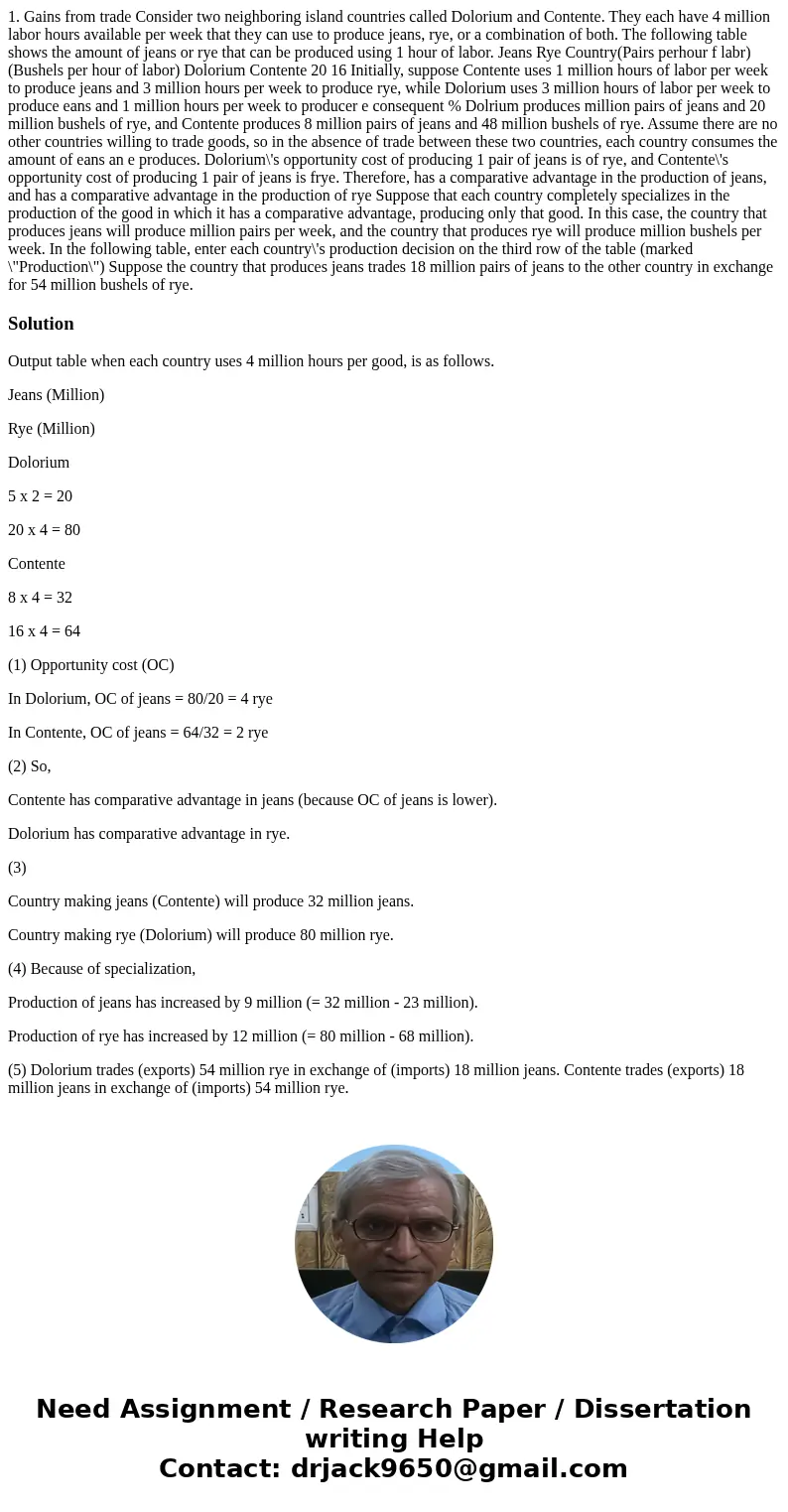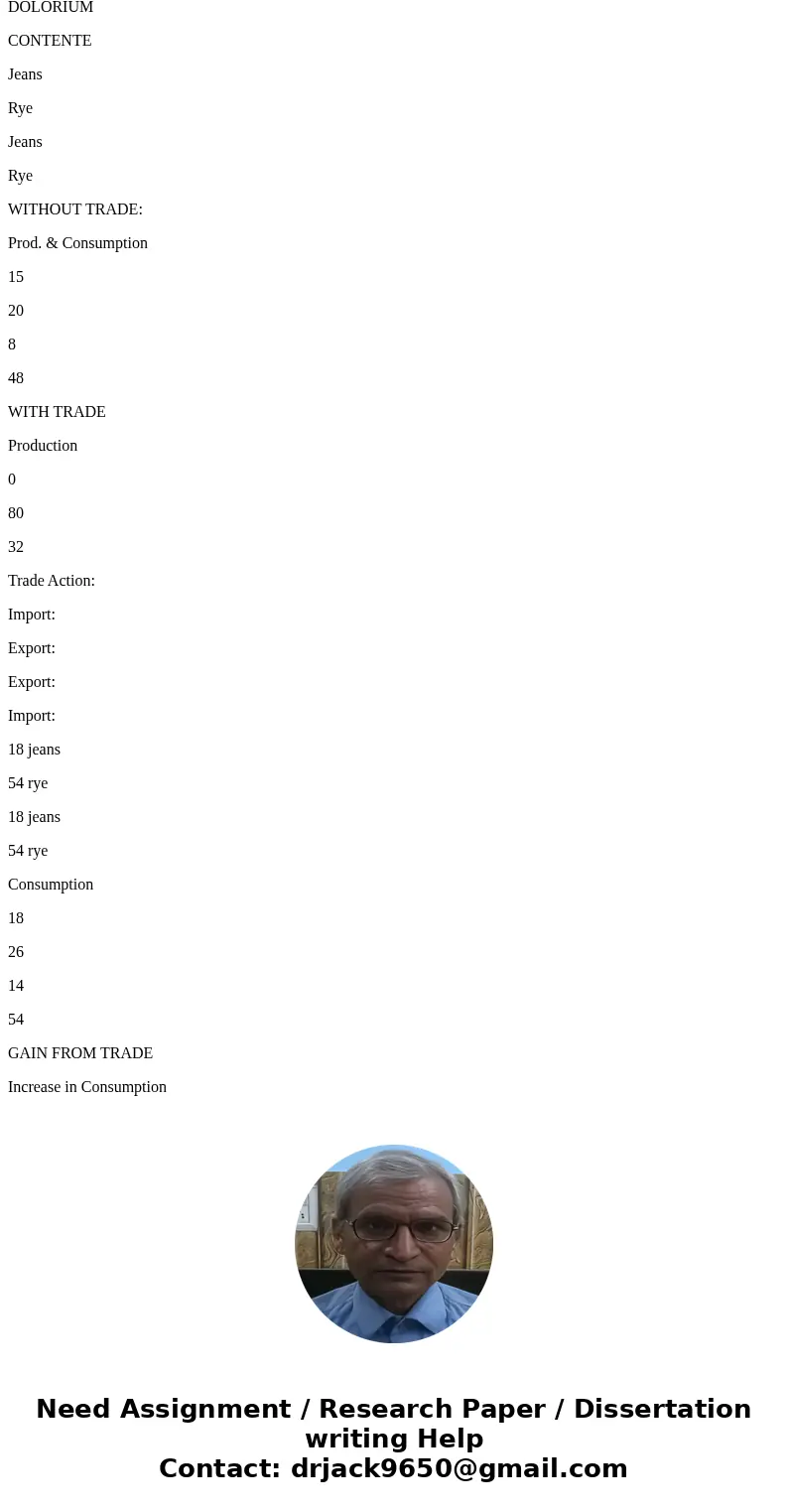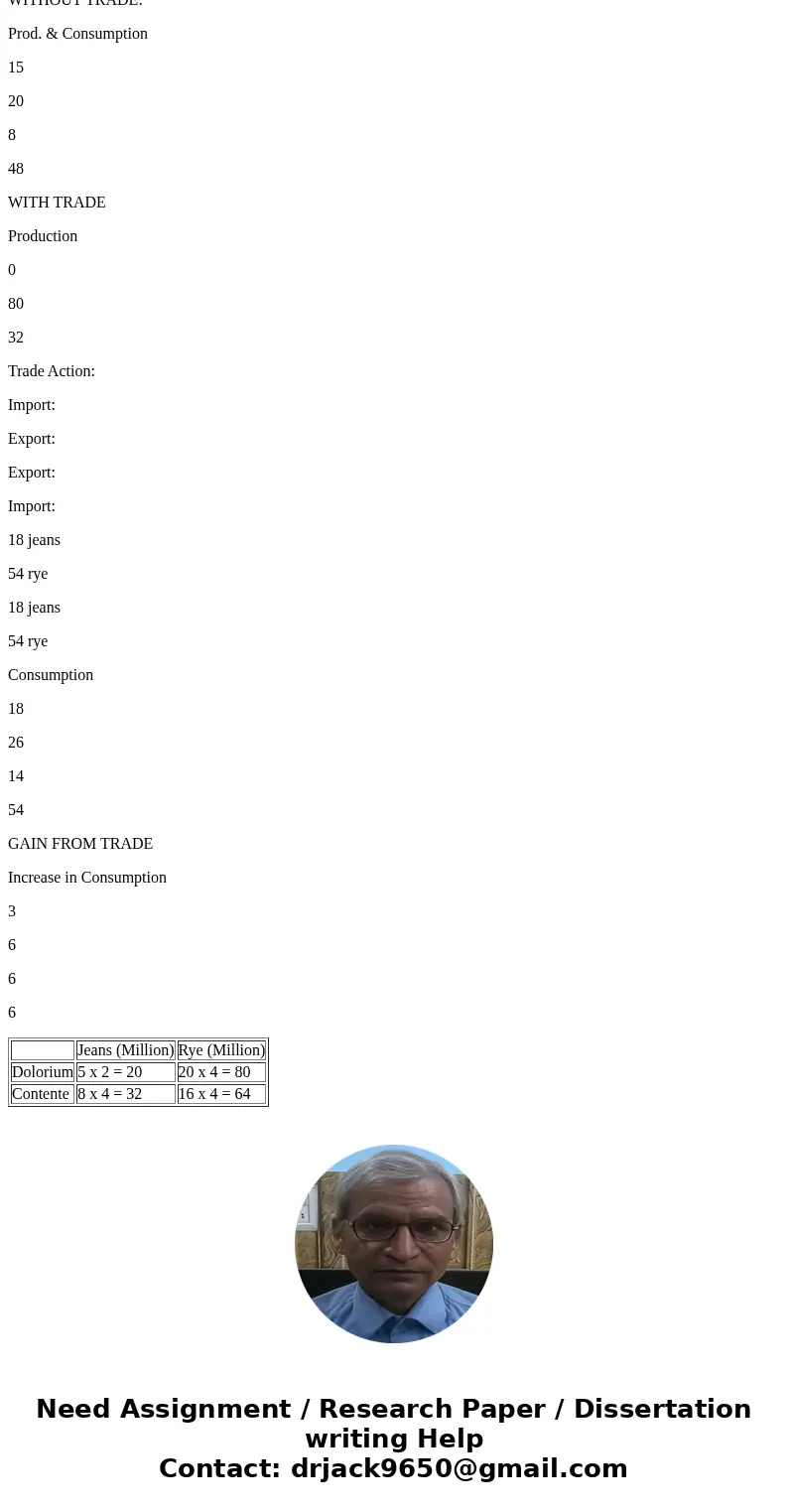1. Gains from trade Consider two neighboring island countries called Dolorium and Contente. They each have 4 million labor hours available per week that they can use to produce jeans, rye, or a combination of both. The following table shows the amount of jeans or rye that can be produced using 1 hour of labor. Jeans Rye Country(Pairs perhour f labr) (Bushels per hour of labor) Dolorium Contente 20 16 Initially, suppose Contente uses 1 million hours of labor per week to produce jeans and 3 million hours per week to produce rye, while Dolorium uses 3 million hours of labor per week to produce eans and 1 million hours per week to producer e consequent % Dolrium produces million pairs of jeans and 20 million bushels of rye, and Contente produces 8 million pairs of jeans and 48 million bushels of rye. Assume there are no other countries willing to trade goods, so in the absence of trade between these two countries, each country consumes the amount of eans an e produces. Dolorium\'s opportunity cost of producing 1 pair of jeans is of rye, and Contente\'s opportunity cost of producing 1 pair of jeans is frye. Therefore, has a comparative advantage in the production of jeans, and has a comparative advantage in the production of rye Suppose that each country completely specializes in the production of the good in which it has a comparative advantage, producing only that good. In this case, the country that produces jeans will produce million pairs per week, and the country that produces rye will produce million bushels per week. In the following table, enter each country\'s production decision on the third row of the table (marked \"Production\") Suppose the country that produces jeans trades 18 million pairs of jeans to the other country in exchange for 54 million bushels of rye.
Output table when each country uses 4 million hours per good, is as follows.
Jeans (Million)
Rye (Million)
Dolorium
5 x 2 = 20
20 x 4 = 80
Contente
8 x 4 = 32
16 x 4 = 64
(1) Opportunity cost (OC)
In Dolorium, OC of jeans = 80/20 = 4 rye
In Contente, OC of jeans = 64/32 = 2 rye
(2) So,
Contente has comparative advantage in jeans (because OC of jeans is lower).
Dolorium has comparative advantage in rye.
(3)
Country making jeans (Contente) will produce 32 million jeans.
Country making rye (Dolorium) will produce 80 million rye.
(4) Because of specialization,
Production of jeans has increased by 9 million (= 32 million - 23 million).
Production of rye has increased by 12 million (= 80 million - 68 million).
(5) Dolorium trades (exports) 54 million rye in exchange of (imports) 18 million jeans. Contente trades (exports) 18 million jeans in exchange of (imports) 54 million rye.
DOLORIUM
CONTENTE
Jeans
Rye
Jeans
Rye
WITHOUT TRADE:
Prod. & Consumption
15
20
8
48
WITH TRADE
Production
0
80
32
Trade Action:
Import:
Export:
Export:
Import:
18 jeans
54 rye
18 jeans
54 rye
Consumption
18
26
14
54
GAIN FROM TRADE
Increase in Consumption
3
6
6
6
| Jeans (Million) | Rye (Million) |
| Dolorium | 5 x 2 = 20 | 20 x 4 = 80 |
| Contente | 8 x 4 = 32 | 16 x 4 = 64 |



 Homework Sourse
Homework Sourse